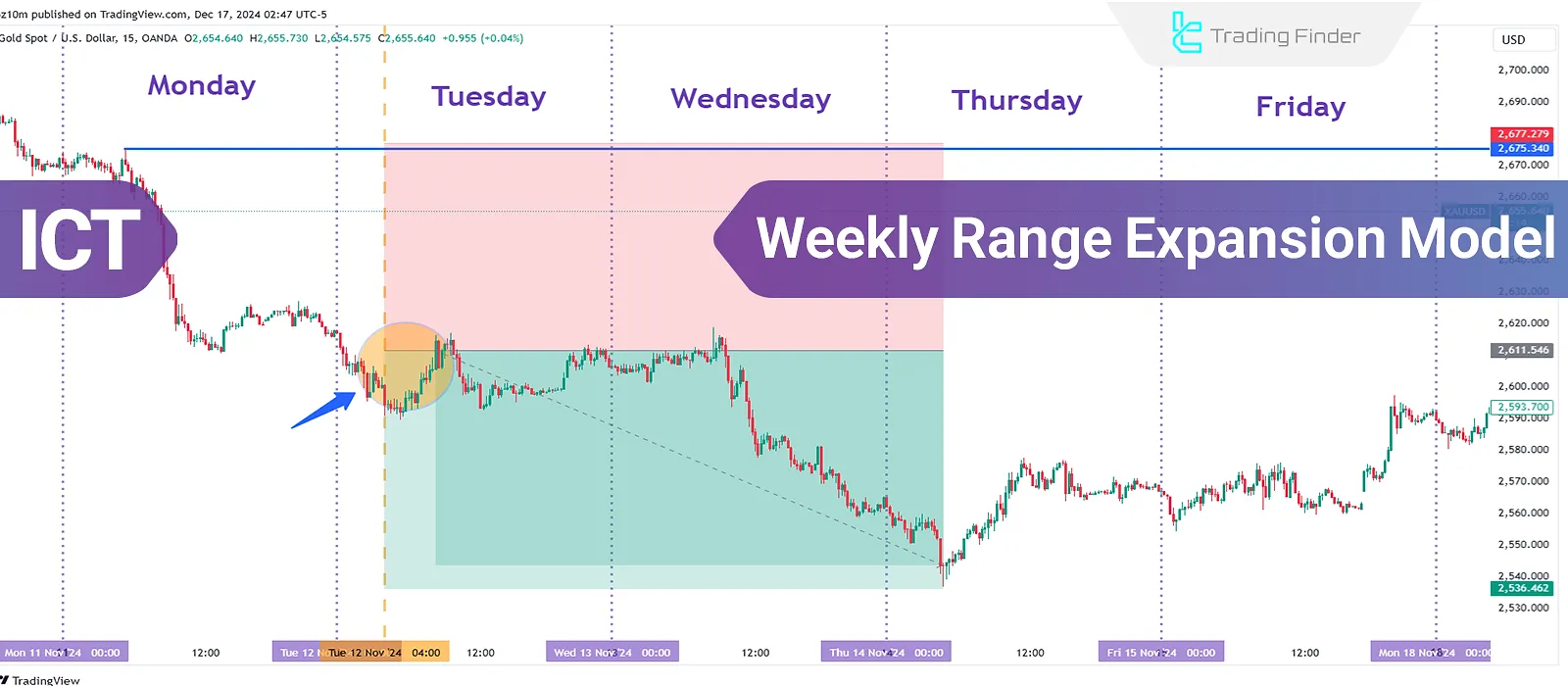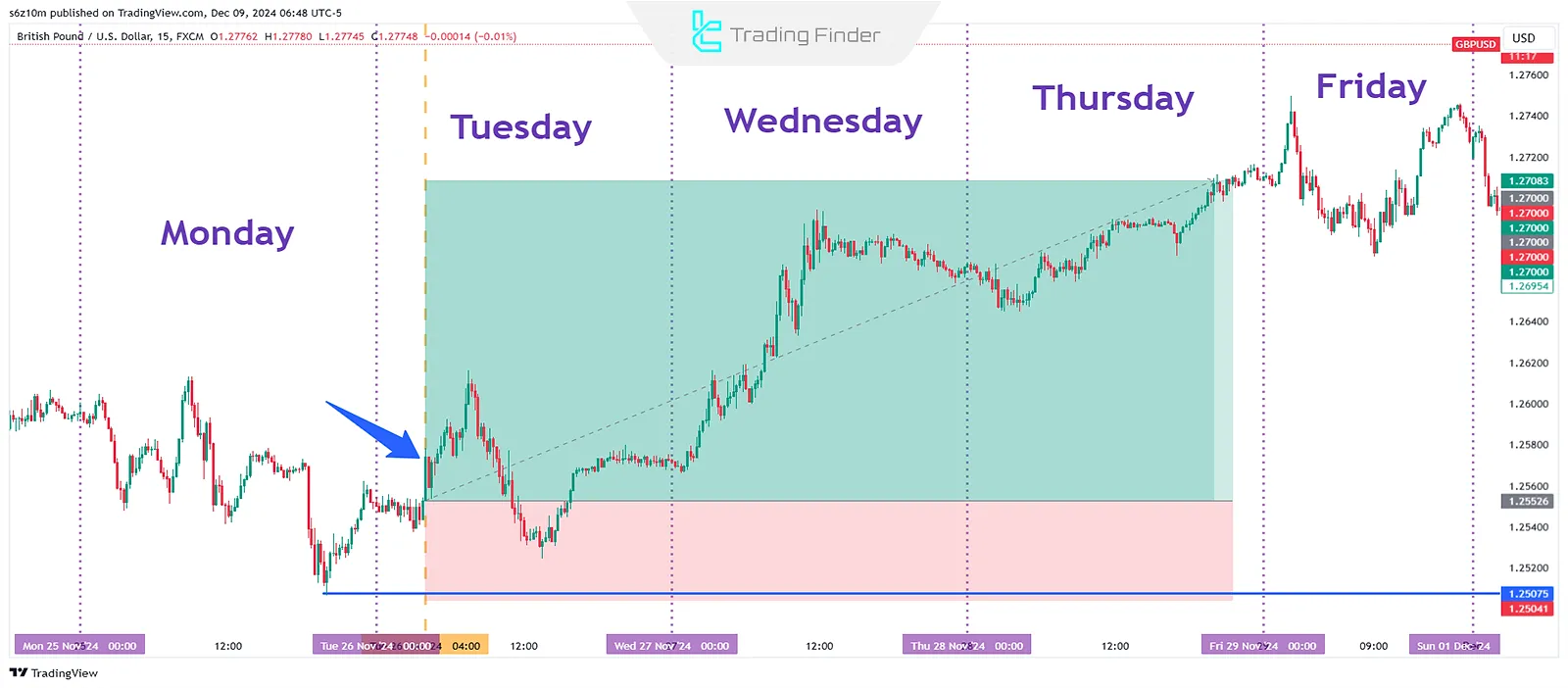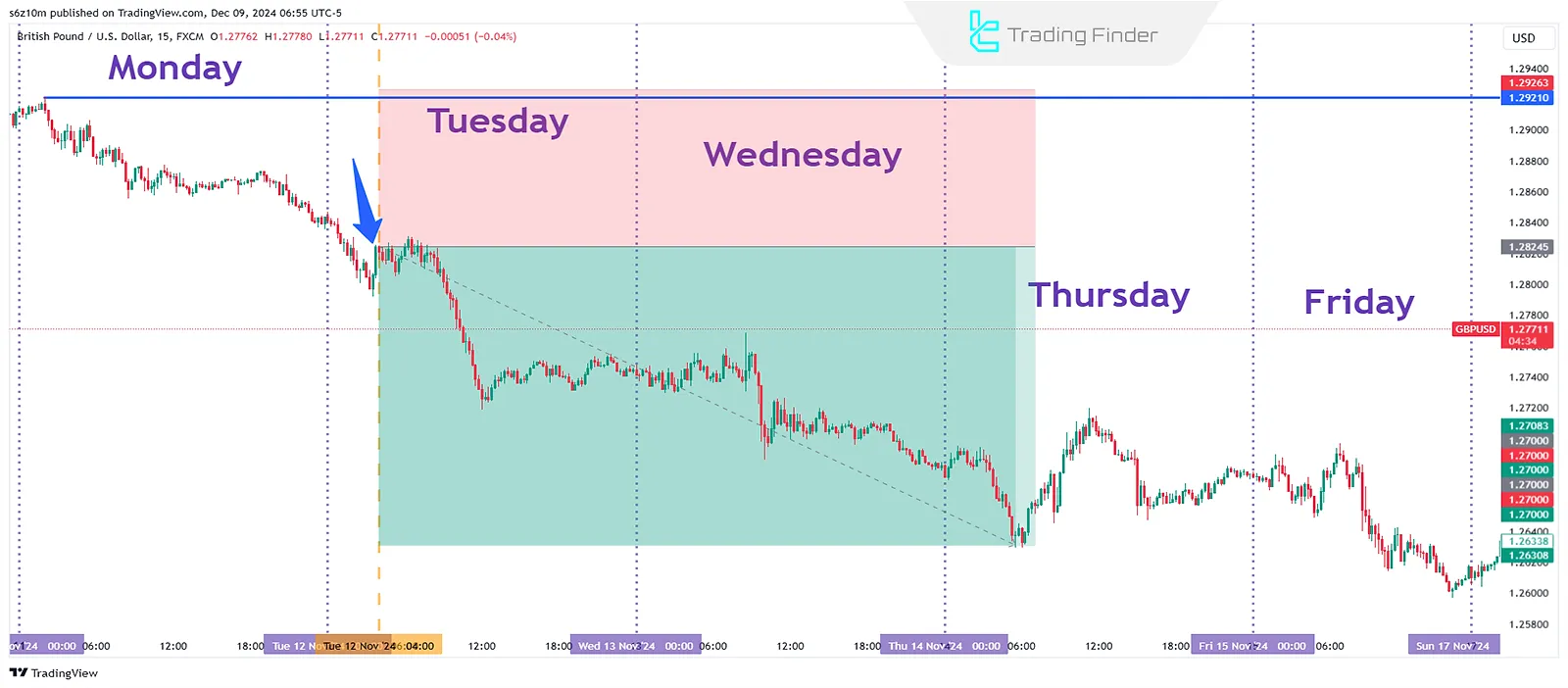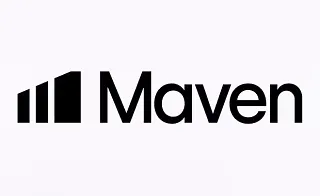The ICT Weekly Range Expansion Model is an analytical approach used in short-term trading to identify price expansions throughout a trading week. The weekly range expansion is based on three key elements of Fair Value Gap (FVG), Liquidity Pool, and Old Highs/Lows.

What is the ICT Weekly Range Expansion Model?
In ICT style, Weekly Range Expansion Model is a short-term strategy designed to profit from weekly market movements. This model operates based on three key components known as PD Arrays:
- Fair Value Gap (FVG): Price areas formed due to market speed, where price seeks to return and fill the gap;
- Old Lows/Highs: Areas where liquidity is concentrated, serving as price targets or reversal points;
- Liquidity Pool: Areas where stop orders accumulate, attracting price movement.
Note: This model is applicable to various financial markets, including Forex market, stocks, and cryptocurrencies.

Steps to Implement the ICT Weekly Range Expansion Model
To apply this model and execute a position, follow three main steps:
#1 Determine Weekly Direction
To determine the weekly market direction, first analyze the weekly chart. This step includes checking for market movements to fill Fair Value Gaps or gather liquidity from specific pools.
If the market moves towards higher highs and the structure is bullish, your weekly bias will be bullish. Conversely, the bias is bearish if the price moves towards lower lows.
#2 Identify the Range Expansion Setup
Once the direction is determined, identify the price range expansion. Typically, early in the week (Monday), the price establishes a specific range.
In fact, the range expansion occurs from Tuesday to Thursday. Analyzing lower timeframes (such as the daily chart) helps confirm this expansion.
#3 Execute the Trade
Based on the weekly bias and range expansion setup, execute your trades:
- If the bias is bullish, enter a buy trade on Tuesday at 4:00 AM (New York time) when the candle opens;
- If the bias is bearish, execute a sell trade at the same time.
How to Trade a Bullish Weekly Expansion?
To trade a bullish weekly expansion, follow these steps:
- Confirm Weekly Bullish Bias: Check for sell-side liquidity being taken or price reaching the discount zone;
- Target Price: Price typically moves toward buy-side liquidity or premium zones;
- Confirm Structure: Look for a market structure shift (MSS) towards bullish on the daily timeframe;
- Execution Timing: Enter buy trades from Tuesday and hold until Thursday.
For example, the following image illustrates a real-world execution of this model:

How to Trade a Bearish Weekly Expansion?
For bearish trades, follow the same steps but with a bearish confirmation:
- Confirm Weekly Bearish Bias: Look for buy-side liquidity being taken or price reaching the premium zone;
- Target Price: Price generally moves towards sell-side liquidity or discount zones;
- Confirm Structure: Ensure a market structure shift (MSS) towards bearish on the daily timeframe;
- Execution Timing: Enter sell trades on Tuesday and hold until Thursday.
Key Considerations in Using the ICT Weekly Range Expansion Model
To correctly implement the concept of Weekly Range Expansion in the ICT style, consider the points below:
Determine Weekly Bias Accurately
Reviewing the weekly timeframe is essential to identify the primary price direction. For example, if the market took out sell-side liquidity last week and the price is in a discount PD Array, a bullish move in the upcoming week is likely.
Align Timeframes
It is critical to use the daily timeframe to confirm the weekly bias. For instance, a bullish market structure shift (MSS) in the daily timeframe confirms a bullish weekly bias.
Entry Timing
The best entry point is usually on Tuesday, as the range expansion phase begins around this time.
Logical Stop-Loss Placement
This model typically employs tight stop losses, which helps to manage risk effectively.
Common Mistakes When Using the ICT Weekly Range Expansion Model
- Incorrect Weekly Bias Determination: Ignoring liquidity zones, premium, and discount areas can lead to misinterpretation;
- Entering Too Early or Too Late: Trading before necessary confirmations or after the expansion phase leads to poor results;
- Ignoring Lower Timeframes: Failing to analyze market structure shifts (MSS) in lower timeframes can result in bad trades;
- Overlooking News Events: Economic releases and macro news impact weekly trends, and failing to consider them can lead to incorrect trade timing.
Conclusion
The ICT Weekly Range Expansion Model is a powerful tool for traders looking to refine their trading precision and efficiency. By combining market structure analysis, liquidity identification, and proper timing, this model helps traders capitalize on price movements.





